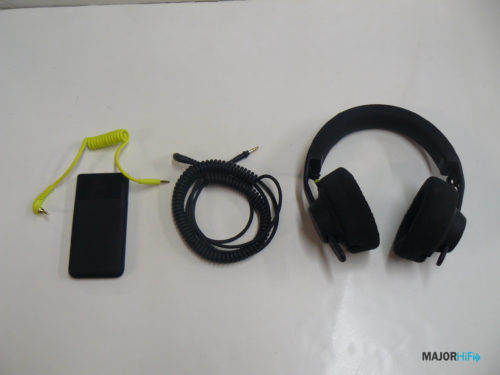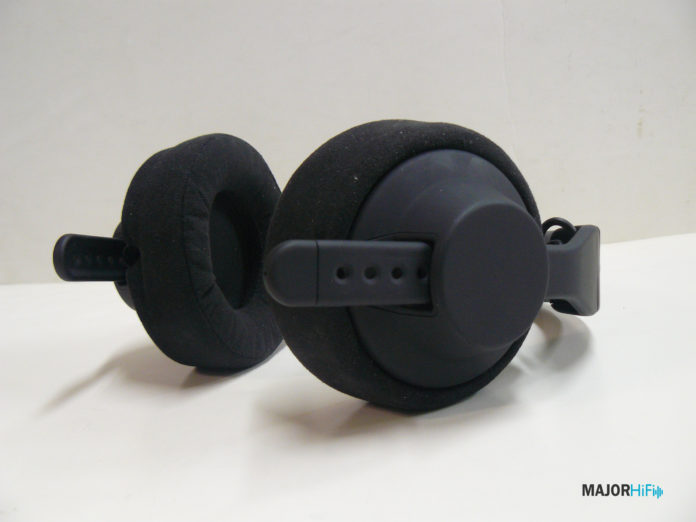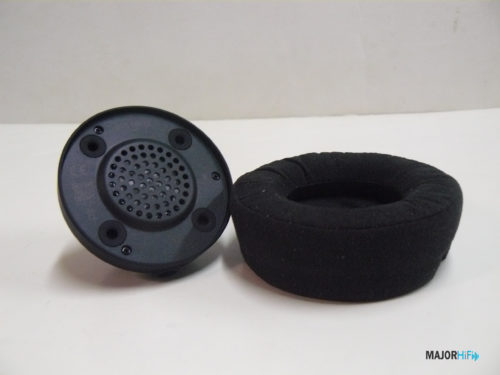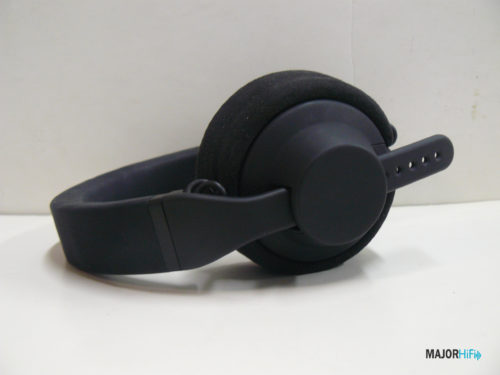Some headphone brands like to target artists and creators with reliable products they can depend on for developing all forms of online media. Having a set of cans that can accurately display what you’re putting out is key to mixing engineers, video editors, and DJs. I feel like one of those brands doesn’t come up nearly enough in the conversation when discussing these types of headphones, and that’s AIAIAI. This manufacturer has released a variety of uniquely assembles headphones over the years, and their selection is still growing.
Recently I got my hands on one of their latest updates to their TMA-2 line of headphones. The new Studio Wireless+ is an updated version of the TMA-2 that adds wireless capabilities to your listening workflow. There aren’t many wireless studio headphones out there, so this can be quite an interesting experience.

What You Get
- H10 Headband
- XO1 Transmitter
- SO5MKII Speaker Driver
- EO5 Over-Ear Ear Pad
- CO2 1.5mm Coiled Cable
- Quater-Inch Adapter
- AO1 Protective Pouch
Look and Feel
If you’re not familiar with the build of AIAIAI headphones, you actually need to build the headphones. When completed, the TMA-2 Studio Wireless+ resembles what you might be used to seeing from AIAIAI. The main construction remains unchanged in their standard versions. This structure works depending on other peripherals you prefer, but out of the box, the Studio Wireless+ is still an effective design. They may not be much to look at, but they’re compact and versatile enough to assert their own value. My only major gripe is the rubber headband cover that can sometimes feel uncomfortable, but otherwise, this fit is cozy and supportive.
Design and Functionality
The vanilla speaker driver for the Studio Wireless+ is AIAIAI’s SO5MKII, which is a 40mm dynamic driver made with a bio-cellulose diaphragm. This organic compound highlights stiffness and precision, significantly reducing unwanted noise and distortion. This helps paint a more accurate image in the sound signature, making it designed to be a good reference for producers.
If you’re itching for me to get to where the wireless in studio wireless+ comes into play then look no further. This isn’t your ordinary Bluetooth headphone, as the Wireless+ doesn’t even use the normal Bluetooth we’re used to seeing. These headphones use the AIAIAI developed XO1 transmitter that uses W+ Link technology for its function. It uses an ultra-low latency CODEC that is able to transmit lossless audio over a wireless signal. W+ link is able to deliver 1500kbps, translating to standard Redbook CD-quality audio at 16bit, 44.1kHz.
You connect the XO1 to your source using a 3.5mm jack, then, after holding down the main button on the device, it will go into a pairing mode. Then, after turning on the headphones using its row of buttons on the headband, the studio wireless+ will connect to the XO1 without having to mess with any Bluetooth settings at all. It started out confusing as I was trying to connect the headphones as you would any Bluetooth system, but after getting it right it really is impressive how seamless and easy the connection is.
It’s a rarity to have a wireless experience in a professional space, but AIAIAI has developed a way for you to hear uncompressed audio without the need for many cables. Of course, if you feel it still isn’t your thing, you can always switch back to hooking up the coiled cable it comes with. The actual XO1 box itself is roughly the size of some portable amps you might see around, so you should have any issue finding the desk space for it. Just make sure you’re also by a place where you can charge the XO1, as running out of battery during a listening session can be a nuisance.
Soundstage
With a headphone like this, a clear and expressive soundstage is needed, and luckily AIAIAI gives you just that with the new TMA-2. Many DJ style or studio headphones of the like give you a similar level of accuracy, but sometimes the imaging itself can be pretty linear. Maybe you don’t want your soundstage to wrap around you or separate the layers too much and keep things simple, but that’s not how the TMA-2 operates. Instead, you get a more involved sonic environment with a more floaty placement. This creates an airier soundstage that still manages to strike a solidified, reference-style image that I found very engaging.
I think these headphones would be reliable for specific genres of music, due to them not being as even or flat across the sound spectrum. The overall darker timbre of the TMA-2 lends itself better to music that shares its tone, but the transparency of the soundstage and spatial imaging will always be reliable.
Low End
The low-end on a set of headphones like this should fulfill a balanced response while showcasing detail and accuracy. While the TMA-2 is known for being a good companion for producing, they seem to carry a warmer tone than what you may desire from a reference headphone, but this studio+ version tries to give you the best of both worlds. I believe it succeeds on most fronts, delivering a hefty helping of bass resonance that feels tight and realistic. You can tell the frequencies are boosted, but the layering and positioning of tone emanate in a satisfying way.
It separates very well giving it the proper amount of attention and space away from the rest of the frequency response. The mid-bass makes guitars and electronics pop, but in a way that’s elegant. You never feel like any of the resonance is interfering with the midrange, making for a more gratifying experience for musicians and producers who want a bump in the bass timbre without sounding too muddy or muffled. It brings the bass to a surface level, establishing a darker tonality, but the frequencies display themselves clearly for both enjoyment and analysis.
Mids
While you can still tell there’s a low-mid focus in the midrange, the studio+ tries to push parts of the response forward in an attempt to highlight some details. I found that these headphones were a lot more successful with their response to vocal ranges than that of the complex harmonics of instrumental performances. The dark tone of the sound signature doesn’t bring out sound elements like acoustic guitars or some orchestral string ensembles. However, when listening to genres like Jazz, or any arrangement that uses big band brass sections, appear a lot more alive in the mix.
Then of course there are the vocals, which display a solid presence on the studio+. Both male and female registers are given a commanding response and the nature of the soundstage raises their positioning. The height of these frequencies creates a feeling like the voices are being performed in front of you rather than in your head.
Highs
You won’t find much emphasis on the high-end of the sound spectrum. There’s nothing destructive about the presence of treble here, and there’s no discernable roll-off that would significantly reduce fidelity. The resonance of the highs is still considerably smoothed out though, but it works in the favor of a flatter timbral response. Some splashy details are featured well, however, they lack power. Their drive doesn’t mitigate height though, as the soundstage and imaging still compliment the treble to a considerable degree.
Summary
I enjoyed the Studio Wireless+ quite a bit. In the sound department, this is a worthy, albeit darkly toned reference headphone for artists and producers. However, it’s definitely a pickier headphone than some might expect, and will be much more efficient with bass-centric genres. With that being said, if you just wanted to listen to the Studio Wireless+ casually, then you’re in for a satisfying experience.
If you have the time for the actual wireless part of this headphone, then you might be thoroughly impressed but listening to true lossless over a wireless signal, but it comes with its own quirks as well, such as its battery. Overall, for $350, AIAIAI gives you the whole experience that is well worth it, and I can’t wait to see how W+ technology develops in the future.
| Pros | Cons |
|
|
The AIAIAI TMA-2 Studio Wireless+ is available on their website here.
MAJORHIFI may receive commissions from retail offers.











